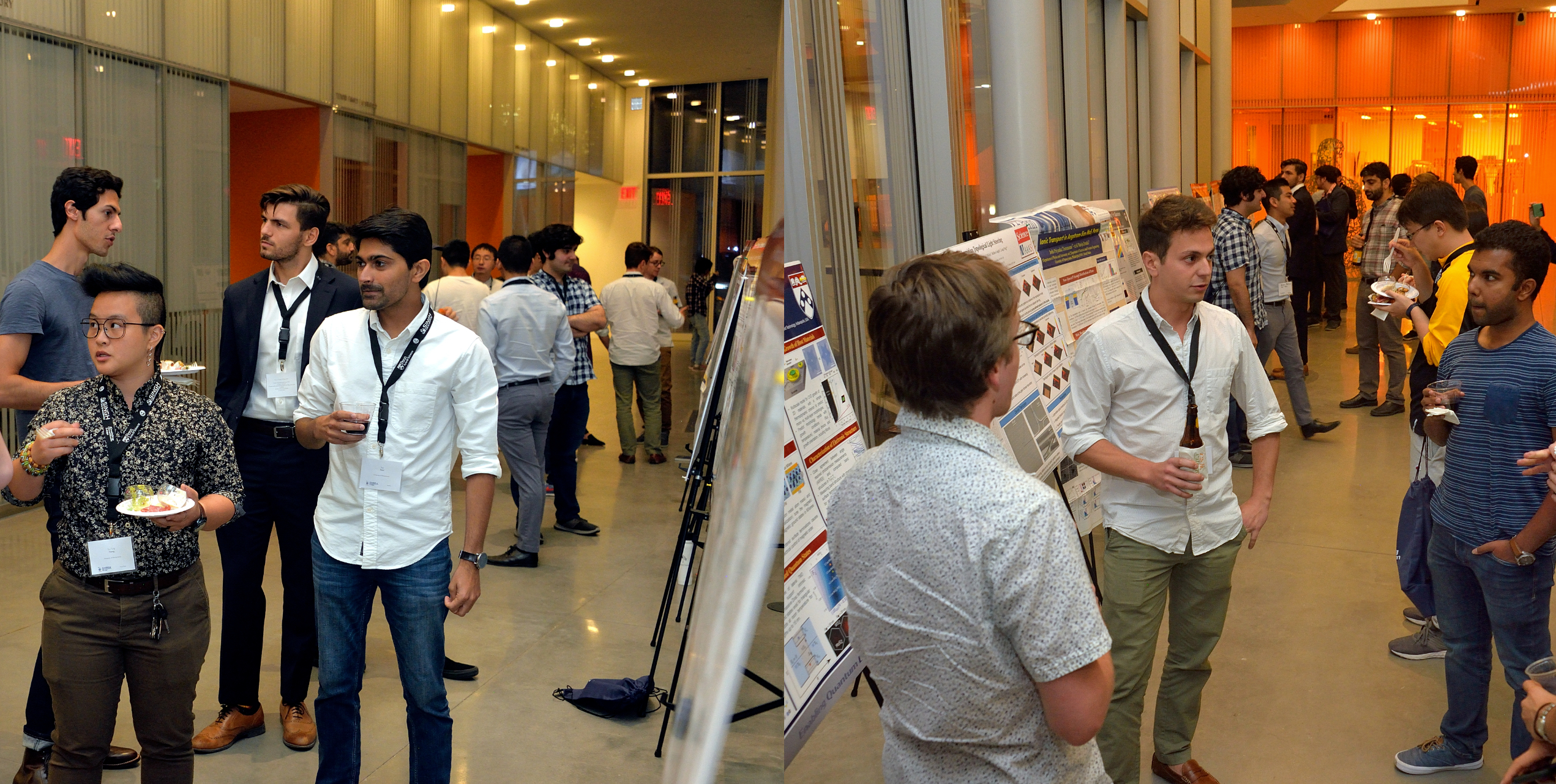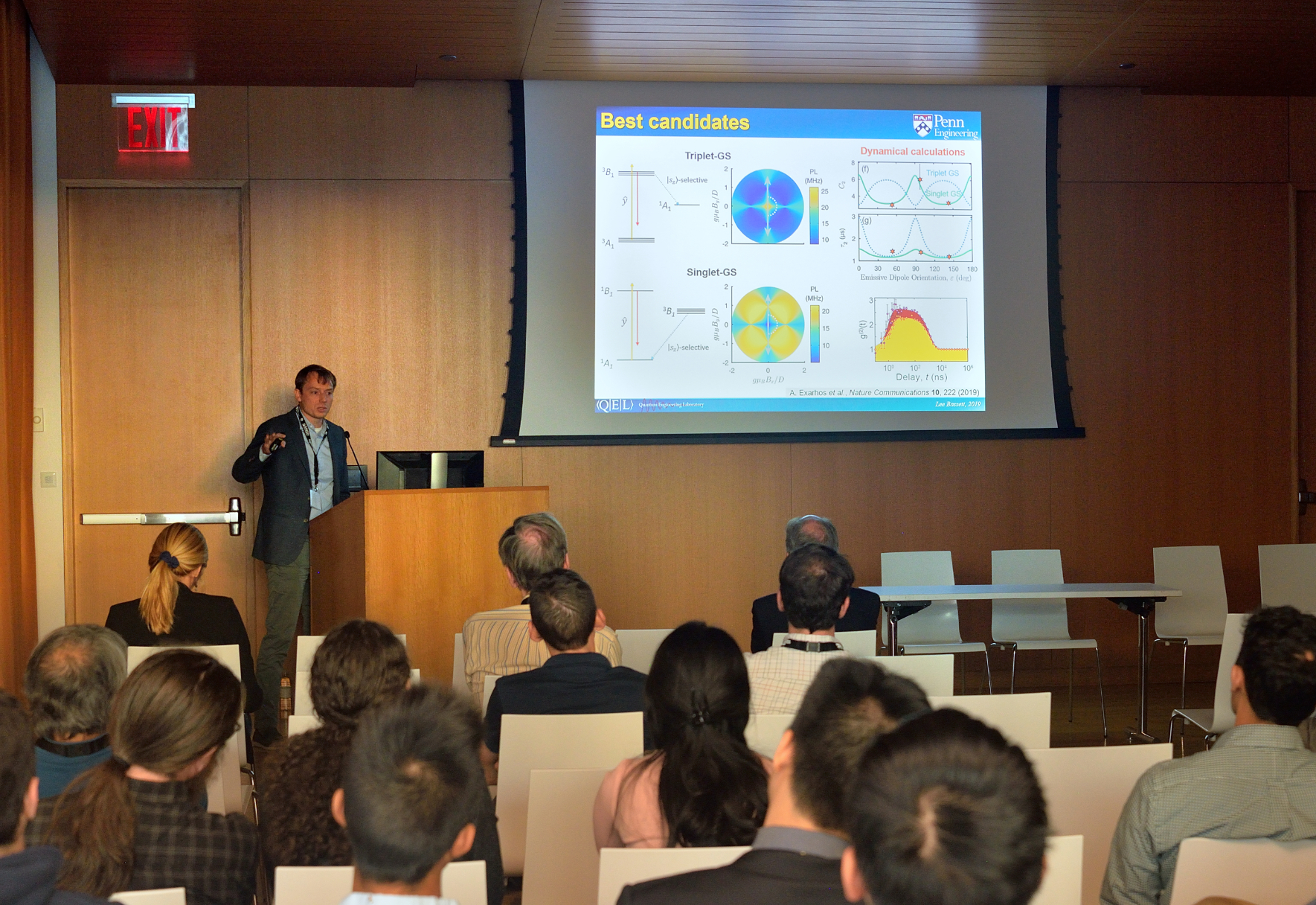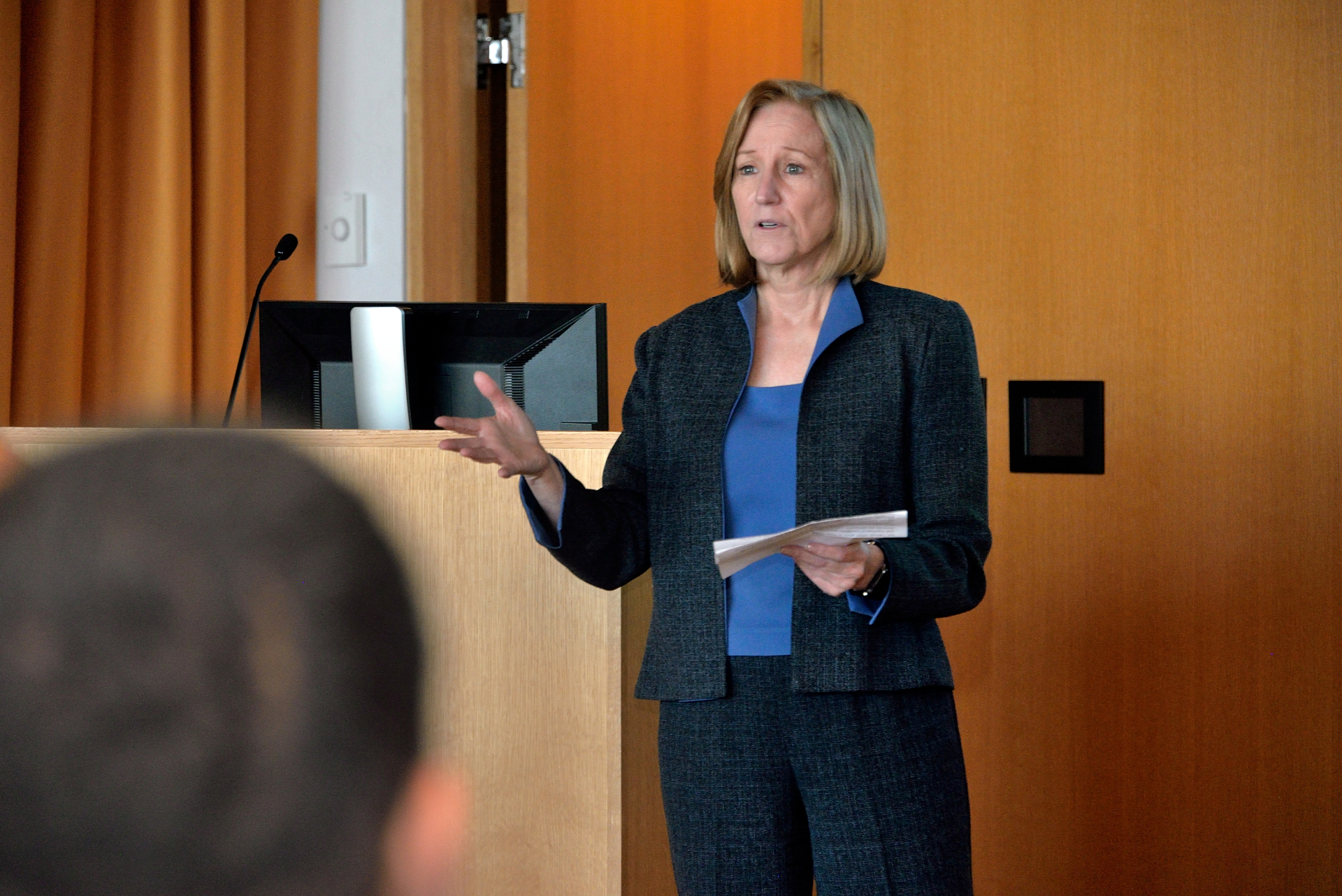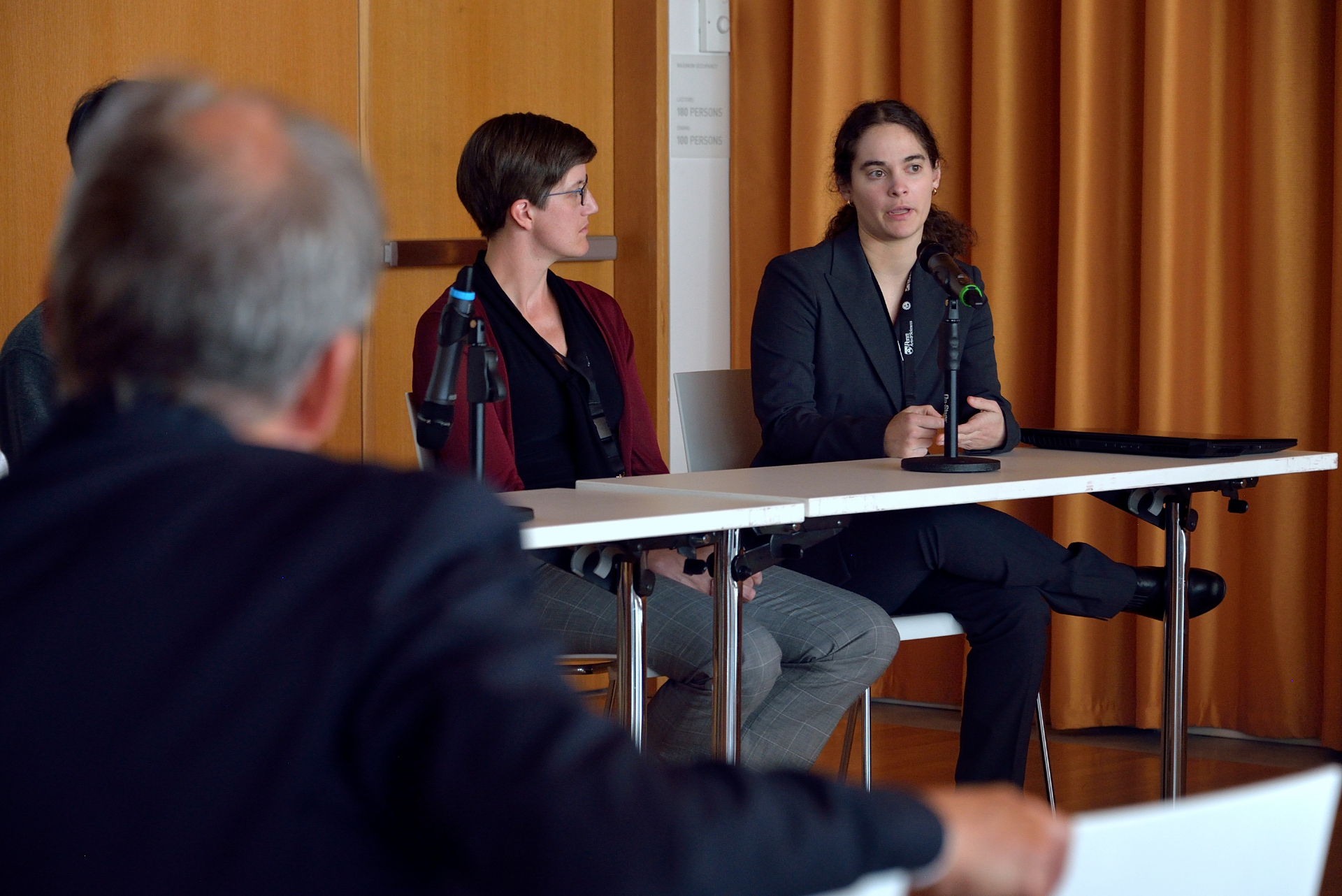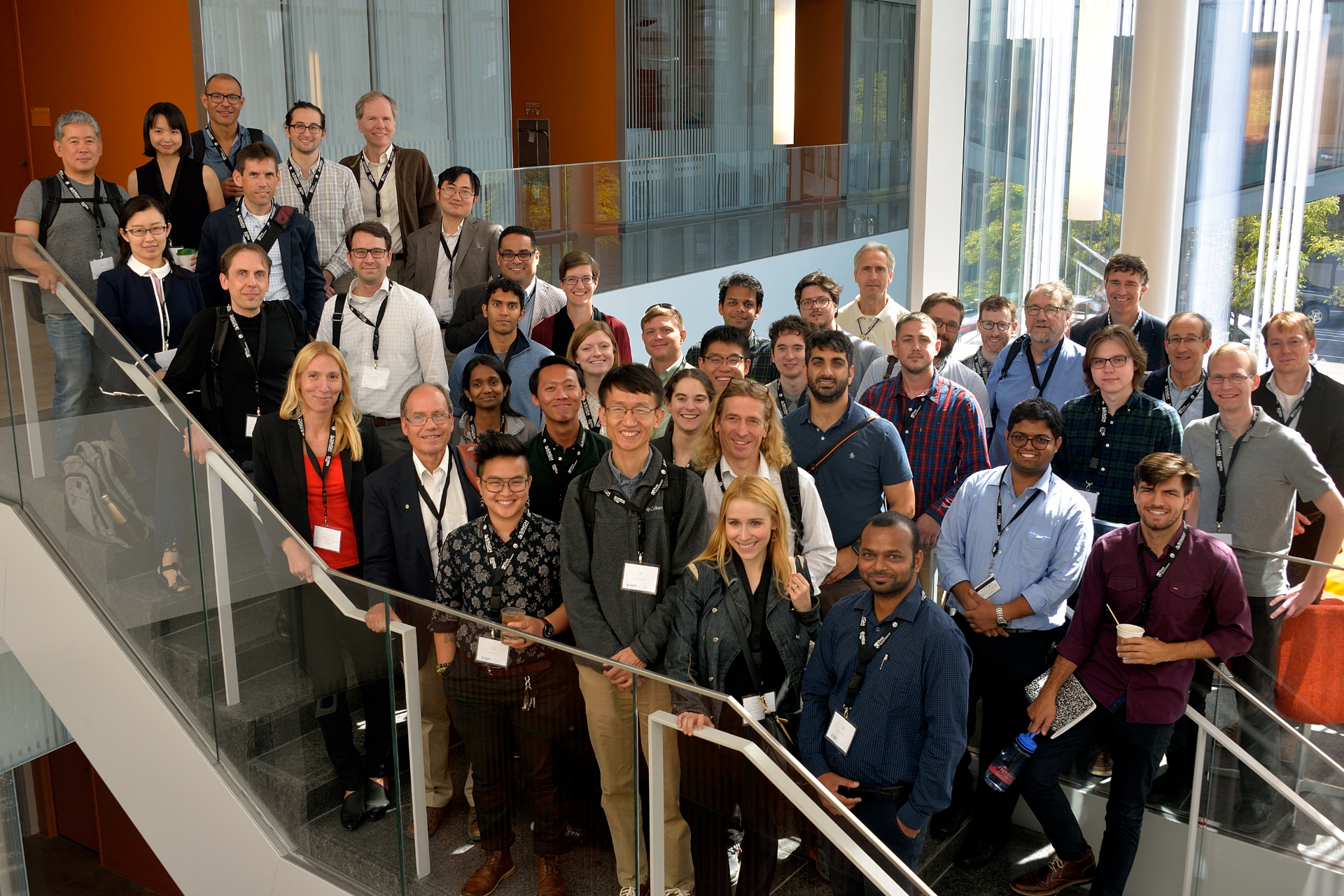
A recent leaked research paper put the field of quantum computing in the science news spotlight. While the validity of Google’s claims of “quantum supremacy”—the ability to run computations that are impossible in classical computers—haven’t yet been confirmed, the paper has already led to a flurry of speculation on its impacts from online security to cryptocurrency.
Beyond the headlines, quantum computing is an active area of research with the potential to not only perform complex computations, but to make devices that are faster, more secure, more precise, and that require less energy. It’s also a field that faces technical hurdles before the full potential of quantum materials can be reached.
To address some of these challenges, Penn hosted the National Science Foundation (NSF) Enabling Quantum Leap workshop. Organized by Marija Drndić, the Fay R. and Eugene L. Langberg Professor of Physics in the School of Arts and Sciences, the goal of the workshop was to bring together experts across campus to discuss the latest results of NSF-funded high-risk, high-reward research projects while also providing a platform to share new ideas and to discuss strategies for the future.
Traditional computing systems use binary arithmetic, a series of zeros and ones known as bits, to store and manipulate digital information. Thanks to insights from quantum mechanics, more information can be manipulated using quantum bits, or qubits, in quantum systems. Now, researchers face the challenge of developing hardware that can access and read individual quantum states, many of which currently only work at extremely low temperatures.
With quantum materials and quantum information technology one of NSF’s 10 big ideas, the Quantum Leap workshop focused on room-temperature quantum logic using low-dimensional materials, ones that are only a few atoms thick. During the two-day event of presentations and panel discussions, students, researchers, and faculty gathered at the Singh Center to consider the challenges faced by the field and how they might be solved through collaboration.
On Day 1, Penn Engineering’s Ritesh Agarwal shared his group’s work on Weyl semimetals, quantum materials that can help create light-controlled electronic and quantum devices. Agarwal’s research was supported by fundamental physics theories developed with Charles Kane and Eugene Mele, both of the School of Arts and Sciences. He is now using this work to find ways to encode more information onto photons, one possible approach for room-temperature quantum systems.
Penn Engineering’s Lee Bassett and Deep Jariwala discussed their groups’ research: Bassett’s on two-dimensional hexagonal boron nitride, a material that hosts optically accessible quantum states at room temperature, and Jariwala’s work on ways to better control the flow of light in a material to retrieve unique quantum modes.
After opening remarks from Penn’s Dawn Bonnell, Arjun Yodh, Mark Allen, and NSF’s Bob Opila on day two, NSF-funded experts from around the country presented their latest research findings. Students and faculty were able to discuss technical issues of room-temperature quantum logic and what the future might hold for other applications.
David Hopper, a physics Ph.D. student at Penn, says he gained a lot from the “informationally-dense,” fast-paced technical presentations followed by engaged questions and discussions from the audience. It’s a format that Hopper says is not typical of a scientific conference but is one that’s especially crucial for fields like quantum computing where the work is extremely interdisciplinary. “You can read about a topic and get a fair amount of knowledge, but sometimes you need to reach out to that other expert and have a discussion,” he says.
Engineering graduate student Raj Patel, winner of the student poster contest, says that the workshop was also a great place to get to know his Penn colleagues in other departments and labs. “It’s not just the professors who can start collaborations,” he says. “Being able to talk about our work, to know what each of us is doing, really brings people together.”
The gathering also provided a place to discuss other applications for quantum materials, such as medical sensors and communication platforms, many of which could be developed and used in the near term. “Low-temperature requirements might not actually be a deal breaker for quantum computers; however, room-temperature operation is crucial for quantum sensors that interact with chemical or biological systems and for developing compact, low-power devices that can be distributed through fiber-optic networks; 2D materials can play a crucial role in both of these applications,” says Bassett.
Another talking point was the importance of getting researchers from different fields to speak the same language. In an interdisciplinary field that involves physics, math, materials science, and computer science, future advances will rely heavily on ongoing collaborations to ensure that fundamental findings can be translated into useful materials and devices. “Getting from basic physics to controlling devices is a big step. There was a lot of discussion about that, and I thought that was really productive,” says Bassett.
For Drndić, this workshop is a starting point for establishing key connections between engineers and physicists that can help Penn continue to be a leader in this field. “We’re now starting to see progress,” Drndić says. “Now, as the public is more informed, and there is more enthusiasm, it’s starting to become more real. It’s a ripe terrain for discussion.”
“Penn researchers are taking the lead,” says Bonnell, the vice provost for research at the University of Pennsylvania, about the federal government’s Quantum Information Systems Initiative, “receiving many of the initial grants in the NSF Quantum Leap program and convening colleagues from across the country to map out the next steps in this field. An alliance of Penn researchers in physics, materials science, electrical engineering, and chemistry is working on a portfolio of exciting concepts that will drive future discoveries and invent new quantum technologies.”
Lee Bassett is an assistant professor in the Department of Electrical and Systems Engineering in the School of Engineering and Applied Science at the University of Pennsylvania.
Dawn Bonnell is the vice provost for research at the University of Pennsylvania.
Marija Drndić is the Fay R. and Eugene L. Langberg Professor of Physics in the Department of Physics & Astronomy in the School of Arts and Sciences at the University of Pennsylvania.
The “Enabling Quantum Leap” workshop was supported by the National Science Foundation, Office of the Vice Provost for Research, Laboratory for Research on the Structure of Matter, Materials Research Science and Engineering Center at Penn, Singh Center for Nanotechnology, and School of Arts and Sciences. Other Penn researchers who were involved include Bo Zhen and his lab, Charles Kane, and Eugene Mele.
Agarwal and Bassett are supported by two grants from the National Science Foundation Research Advanced by Interdisciplinary Science and Engineering (RAISE) Quantum Integrated Platforms (EQuIP) effort.




